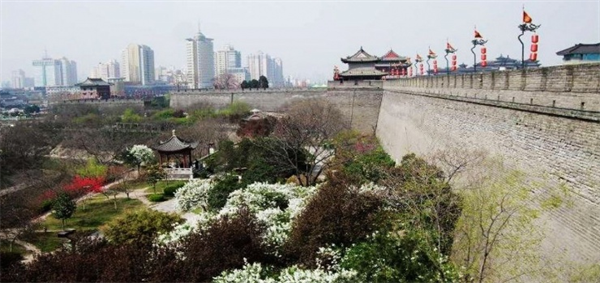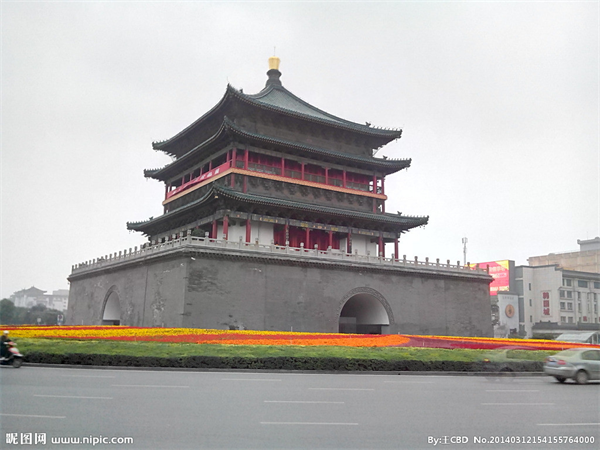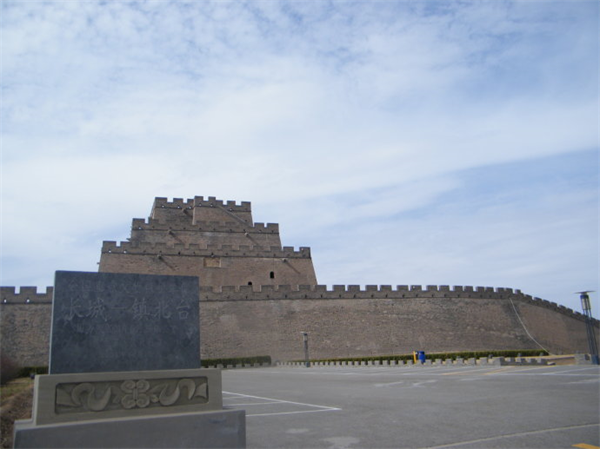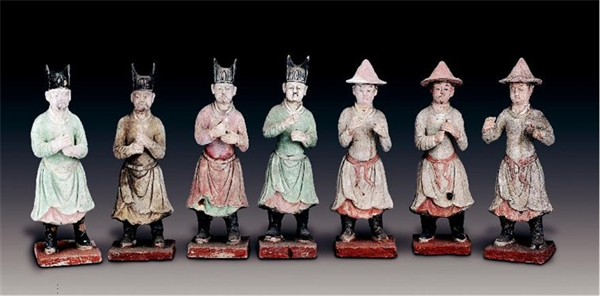City of Military Importance in Northwest China—Xi’an City

City Wall of the Ming Dynasty in Xi’an
Since the Five dynasties, with the continuation of the Chang’an wars and the political center being moved eastward, Xi’an lost its status as the capital of the country and Shaanxi lost its place as the political center. Shaanxi and Xi’an, which had been the capital for more than 10 dynasties and gloried for a thousand years, gradually faded to be silence for more than one thousand years. However, Shaanxi, especially Xi’an, which had taken the long term responsibility of maintaining stability in the northwest and southwest regions, and guarding the security of central China, always attracted attention from the rulers of the Song, Yuan, Ming, Qing and other dynasties who established capitals in the eastern region, and achieved great cultural success.
Since the Tang Dynasty, Xi’an, although not serving as the capital city, still played an extremely important role in national politics and especially in the military. The Song, Yuan, Ming and Qing dynasties all treated Xi’an as an important military city which had controlled over the northwest and southwest regions. Therefore, its position was much more important than other cities. Xi’an was once called Chang’an, Da’an Fu (late Liang Dynasty), Jingzhao Fu (late Tang Dynasty), Shaanxi Lu (Song Dynasty), Anxi Lu (Yuan Dynasty), Fengyuan Lu (Yuan Dynasty) and other different names (Fu in dynasties before the Song Dynasty and Lu after are equivalent to the present province). In 1368, Zhu Yuanzhang established the Ming Dynasty in Nanjing, and in the spring of the following year, General Xu Da captured Fengyuan Lu and renamed it as Xi’an which meant stabilizing the northwest region. The important role of Xi’an as a city of military importance could also be fully reflected in the military and political facilities built by rulers from different dynasties.

One of the patterns of Xi’an City emblem—Xi’an Bell Tower
In the early Ming Dynasty, with an effort to consolidate the power of the Zhu family, the founding emperor Zhu Yuanzhang granted territories from all over the country to his twenty-four sons and one grandson who were exclusively titled to be throne prince. Among these, his second son Zhu Shuang was granted the title of the Prince Qin in Shaanxi and was stationed in Xi’an to guard the security of Shaanxi. Since the Ming Dynasty was still threatened by the surviving Mongolian forces from the north, the regional princes stationed in that region were entrusted with the important task of guarding the security of the frontier. The Prince Qin, Zhu Shuang, who was stationed in Xi’an, the Prince Gong in Shanxi, Zhu Gang, who was stationed in Taiyuan and the Prince Yan, Zhu Di, who seized the throne from his nephew, Emperor Jianwen, after the Jingnan Battle, were all commanding millions of troops, especially Prince Qin. As Prince Qin was the oldest seignior, wielding the strongest military power and taking on the heavy responsibilities of guarding the security of the northwest frontier, his feudal vassal state won the title of “No. 1 feudal vassal state” which was fully reflected in the urban construction of Xi’an.

The No. 1 terrace in the world—Yulin Zhenbei Terrace
The city wall of Xi’an, completed in the third year of Hongwu Period (1378AD), is the largest preserved brick city construction in China and even in the world. It has a perimeter of 13,912 meters, surrounding a city area of 11.5 square kilometers. There are 98 piers extruding from the wall to reinforce the city, 98 watch towers, 5,984 crenels. It has a gate tower, an arrow tower and a watchtower for each of the four gates and a bulwark constructed in front of every gate tower. The city wall is 13 meters high, the same as that of the city wall in Beijing; the tower is even higher than that in Beijing and Nanjing; the perimeter of the city is around 14 kilometers, which is also the longest among the cities of this size; its defense capacity is as strong as that of Nanjing and Beijing; all of these factors prove that the Ming Dynasty still had great expectations for Xi’an. It is worth mentioning that the south wall and the west wall of Xi’an City were built on the site of the city wall of the Tang Dynasty by covering the site with new bricks. The site of the city wall in the Tang Dynasty has been completely exposed through the archaeological excavations of recent years. To mark this, the related departments in Xi’an renamed the city wall with the new name of the Tang and Ming Imperial City and built the Hanguang Gate Site Museum on the Hanguan Gate Site from the Tang Dynasty. Now the Xi’an city wall has become an important heritage site under state protection.
As an integral part of the Ming Xi’an City, the Bell Tower inside the city, fi rst built during the seventeenth year of Hongwu Period (1384AD), and with a height of 36 meters, is the country’s largest existing ancient bell tower. With a square base, it is three-stories high with double eaves and a pyramid roof, and a dome as high as fi ve meters on top of the roof. The dome is covered with pure gold foil shining brightly under the sun which shows a spectacular sight to viewers. The two-story bell tower, beautifully decorated and carved, is the typical architectural style of the Ming Dynasty.
The Drum Tower, 250 meters west from the bell tower, was built in the thirteenth year of Hongwu Period (1380AD). The big drum, located in the north side of the tower, named “Wen Tian Drum”, would be beaten at nightfall as a signal that the city gate would be closed. The Drum Tower, with a height of 34 meters, is also the country’s largest drum tower. The body of the tower is a wooden structure with a double-hipped roof and Xieshan top under which there was a channel to give access through the city walls for the carriages and their horses (the Xieshan top is one of the most common forms of ancient architecture, of which around the four slopes of the roof top there are vertical slopes, forming nine ridges on top of the building). The Drum Tower is splendid and exquisite, with two large plaques “Wen Wu Sheng Di” (literally means the holy peace) and “Sheng Wen Yu Tian” (literally means very well-known all over the country) hanging on both sides which highlight the function of the drum tower and the cultural status of Xi’an. It is the landmark of Xi’an and has also been chosen as a national cultural heritage site.

Thirteen Mausoleums of Seigniors in the Ming Dynasty
In order to guard the security of Shaanxi and the vast northwestern region, the Ming government began to build the Great Wall in northern Shaanxi. Given one Great Wall was not enough to provide security, a second Great Wall was constructed. The two Great Walls, with the respective names of the “big side” and the “second side”, were altogether about 600km long within Shaanxi and were the longest frontier Great Walls in the history of Shaanxi. The large-scale defense system, with Xi’an as its center and the two great walls as its symbol, was comparable to Beijing City at that time. The Ming government built the largest pier on top of the Great Wall in Yulin City, Zhenbei Terrace which is still preserved. Zhenbei Terrace, four-storied, with a total height of 27.9 meters, has the title of “the No.1 terrace in the world” which is as famous as the Shanhai Pass and Jiayu Pass. It is the most famous landmark of the Great Wall. Though the Ming Dynasty had strict provisions on the specifications of the tombs of the seigniors, the size of the tomb of the first generation of Prince Qin, Zhu Shuang, went far beyond this provision. Now, the number of the existent tombs of his successors near Xi’an has reached 30 to 40, especially the tombs of the Ming seigniors in Chang’an District. With a number of 13 and known as “Xi’an Ming Tombs”, it is the largest tomb group of the Ming seigniors among the tomb groups in China.


